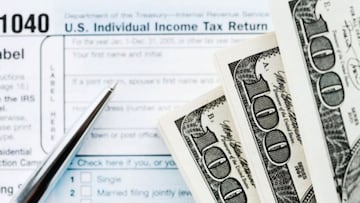IRS refunds: why will there be less this year and how much will I get?
The Internal Revenue Service prepares for a new tax season and warns of a possible decrease in refunds: Why are they less and how much do I get?

A new year has begun and with it a new tax season.
The Internal Revenue Service (IRS) is preparing for the 2023 tax season, which will begin on 23 January and filers will need to get their 2022 tax returns submitted by 18 April or file for an extension. Those that are eligible and want to get their filing out of the way can use the IRS Free File starting 13 January, but the agency won’t begin processing them until the start of the filing season.
Although there are still a few months to go before the IRS starts collecting taxes, the IRS has already issued a warning to taxpayers about 2022 refund payouts.
According to a press release issued in November 2022, taxpayers will receive a smaller amount in their refund check: “Refunds may be smaller in 2023. Taxpayers will not receive an additional stimulus payment with a 2023 tax refund because there were no Economic Impact Payments for 2022,″ read in the letter. “In addition, taxpayers who don’t itemize and take the standard deduction, won’t be able to deduct their charitable contributions.”
#IRS Free File opens Jan. 13. Participating companies will accept tax returns and hold them until Jan. 23, when they can be filed electronically for processing. https://t.co/zmLIB3RMVQ pic.twitter.com/Lg4KqWLY0l
— IRSnews (@IRSnews) January 12, 2023
You may also be interested: IRS $1,200 Refund: Who Will Get the Tax Refund?
IRS Refunds: Why Will There Be Less This Year and How Much Will I Get?
As the IRS put it in its statement, tax refunds will decline in 2022 as most of the tax benefits of the covid-19 era came to an end, which resulted in a hundreds or thousands of dollars in refund checks.
Related stories
Benefits that have come to an end include stimulus checks, expanded child tax credit, and increased child and dependent care tax breaks.
The average refund for the prior year (2021) season was $3,176, which is nearly 14 percent more than the average for a year earlier (2020), according to IRS figures. Taking this into account, the amount of your refund for 2023 will depend on whether you took advantage of the prior tax benefits during 2022, since each taxpayer’s situation is different.


